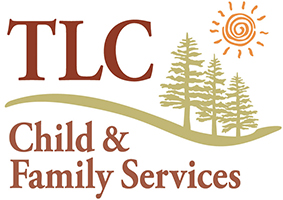The terms are interchangeable. The official name of resource family was established in 2017 to include the process of being able to adopt a child in your care, without having to do an additional adoption home study.
Being a resource parent is a way to make a positive impact on a child’s life. Resource parents provide a safe, loving, nurturing temporary home for children unable to stay safely with their families. As a resource parent, you will become a member of a team that is working to ensure each child’s well-being. The team typically includes the child’s family, the resource family, social workers and other professionals, the court and the child.
- Do you have the time, patience and energy to care for a foster child?
- Can you love and care for a child who has come from a different background than yours?
- Can you help a child develop a sense of belonging in your home even though the stay may be temporary?
- Can you love a child who, because of fear of rejection, may not easily love you back?
- Can you be flexible in your parenting style to meet the needs of each child? Can you set clear limits and be both firm and understanding in your discipline?
- Can you accept assistance and guidance from the team involved in each child’s life including social workers, attorneys, medical professionals, and the birth family?
- Can you maintain a positive attitude toward a child’s parents, even though many of the problems the child experiences are a result of the parent’s actions?
- Are you willing and able to take a child to counseling sessions, doctor’s appointments, visits with family, court hearings and other regular appointments?
- Can you advocate for a child and participate as a part of their support team?
- Can you commit to a child with all your heart and then let go knowing that the investment you’ve made in their life is priceless?
If you can say “yes” or “probably” to these questions, you may be that special person who can change the life of a child in need.
Resource parents provide a supportive, stable family and home. They truly care about the children and youth and help them heal from trauma and loss. Resource parents are part of the child’s team, along with social workers, the child’s family, attorneys, medical personnel and other professionals. The goal of foster care is to reunite children and birth parents if this can be done safely. Most foster children have supervised or unsupervised visits regularly with their parents while in care. Resource parents have the time and transportation to bring the child to these visits. Resource parents frequently become mentors, helping birth parents learn to safely care for their children. We hope the resource family and birth family can work together for the benefit of the child. If the child cannot return safely to the birth parents, resource parents help prepare the child to live with relatives or in an adoptive home. Sometimes resource parents have the opportunity to adopt their foster children.
Most children younger than six are taken directly to emergency foster homes. Older children and youth often go first to the county emergency shelter, the Valley of the Moon Children’s Home, before going to a foster home in the community. All children are assessed for developmental, behavioral and health concerns and treated as needed.
This varies. Some children are in care for a few days before returning to their birth parents or going to live with relatives. Some are reunited with their birth parents after a few months, a year or more. Children and youth who cannot safely return home may become eligible for adoption. If an adoptive home is not found, children may remain in a foster home for a longer period of time.
It takes time to know if a child moved from an unsafe home will be unable to return. While working to reunite the child and birth family, the social worker makes an alternative plan for the child if reunification is not possible. The preferred plans mean the child will live with relatives, be adopted or live with a legal guardian. Resource parents may be considered for a child’s adoption or alternative permanent plan. Most adoptive families serve first as a child’s resource family.
Some resource parents have a child placed in their home immediately upon becoming certified, while others may wait for a placement that is a good match. There are several criteria for what makes a good resource family match, including whether the resource parents speak Spanish or can care for special needs children, older children and teens and sibling groups.
Loving families are diverse. Resource parents may be single, married, same sex couples, gay or lesbian or unmarried couples in stable, long-term relationships. If you are undergoing a major transition in your life, such as a separation or divorce, it’s best to wait to become a resource parent until you are better able to provide consistency, security and stability for a child.
Yes. Some children do well in resource homes without a stay-at-home parent, while others need someone available throughout the day. If you work, a flexible schedule is helpful since resource parents must provide transportation for regular family visits, medical or counseling appointments, and other needs.
Resource parents receive a monthly payment as reimbursement for the children’s basic living expenses. The rate varies depending on the child’s age and any special needs. You must already have sufficient income to support yourself and your family.
If the child has been brought into foster care or if you suspect she or he may be abused or neglected, call county Child Protective Services. In Sonoma County, call the hotline day or night at (707) 565-4300 or (800) 870-7064.
The training and support helps make resource parenting a positive experience for you and your foster child. It is free of charge. Parenting a foster child is not the same as a birth child or stepchild. Most foster children and youth have been abandoned, abused or neglected and this trauma affects their emotions and behavior. Even infants are affected by their experiences, including those exposed to their mother’s substance abuse during pregnancy.
Resource parents help children manage their feelings about being separated from their families. You need to learn how to interact with the children’s birth families, and how to respond before and after children’s visits with family. The pre-service training helps you prepare for these interactions.
It also helps you understand the child welfare court process and how to access helpful community resources. You’ll meet some of the professionals you will work with, as well as experienced resource parents who can serve as mentors.
Each year after being approved by the State, resource parents also participate in eight hours of continuing education.

